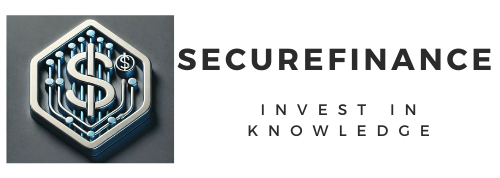
In the rapidly evolving landscape of finance and banking, technology plays a pivotal role in enhancing efficiency, security, and transparency. One of the most transformative technologies emerging in recent years is blockchain. Initially known as the backbone of cryptocurrencies like Bitcoin, blockchain has now found significant applications in various sectors, particularly in finance and banking. This article delves into how blockchain works, its implications for the financial sector, and the future it promises.
What is Blockchain?
At its core, blockchain is a decentralized digital ledger that records transactions across multiple computers. This ensures that the recorded transactions cannot be altered retroactively without the alteration of all subsequent blocks and the consensus of the network. Each block contains a list of transactions, a timestamp, and a cryptographic hash of the previous block, linking them together in a secure chain. This structure makes blockchain inherently secure and tamper-resistant.
Key Features of Blockchain
- Decentralization: Unlike traditional databases that are controlled by a central authority, blockchain distributes its ledger across a network of nodes. Each participant has access to the entire database, reducing the risk of central points of failure.
- Transparency: All transactions on the blockchain are visible to all participants in the network. This transparency builds trust among users, as any discrepancies can be easily identified and addressed.
- Immutability: Once a transaction is recorded on the blockchain, it cannot be altered or deleted. This feature is crucial in finance, where the integrity of transaction data is paramount.
- Security: Blockchain uses cryptographic techniques to secure transactions. Each transaction is verified by consensus among network participants, making it extremely difficult for malicious actors to manipulate the data.
How Blockchain Works in Finance
1. Transaction Processing
In traditional banking systems, transactions often require intermediaries, leading to delays and increased costs. Blockchain technology streamlines this process by enabling peer-to-peer transactions. Here’s how it works:
- Initiation: A user initiates a transaction by submitting it to the network.
- Verification: The transaction is broadcasted to all nodes in the network. These nodes verify the transaction using consensus algorithms, ensuring that the sender has sufficient funds and that the transaction is valid.
- Recording: Once verified, the transaction is grouped with other transactions into a block.
- Adding to the Chain: The block is added to the existing blockchain, making the transaction permanent and immutable.
2. Cross-Border Payments
One of the most significant applications of blockchain in finance is in cross-border payments. Traditional international transactions can take several days and involve multiple banks and currency exchanges, incurring high fees. Blockchain technology can simplify this process:
- Speed: Blockchain transactions can be processed within minutes, regardless of geographic location.
- Lower Costs: By eliminating intermediaries, blockchain reduces transaction fees significantly.
- Transparency: Users can track their transactions in real-time, enhancing trust and reducing the risk of fraud.
3. Smart Contracts
Smart contracts are self-executing contracts with the terms of the agreement directly written into code. They automatically enforce and execute contract terms when predefined conditions are met. In finance, smart contracts can automate various processes, including:
- Lending and Borrowing: Automating loan agreements to release funds when certain conditions are met, such as collateral verification.
- Insurance: Automating claims processing by triggering payments based on verified events (e.g., flight delays).
- Trade Settlements: Automating the settlement of trades, reducing the time and costs associated with manual processes.
4. Asset Tokenization
Blockchain enables the tokenization of physical and digital assets, transforming them into digital tokens that can be easily traded on a blockchain network. This has several implications for finance:
- Fractional Ownership: Tokenization allows for the division of assets into smaller shares, making investments more accessible to a broader audience. For example, real estate properties can be tokenized, allowing multiple investors to own a fraction of a property.
- Liquidity: Tokenized assets can be traded on blockchain platforms, increasing liquidity and enabling faster transactions compared to traditional methods.
5. KYC and Identity Verification
Know Your Customer (KYC) regulations require financial institutions to verify the identity of their clients. Traditional KYC processes can be time-consuming and repetitive. Blockchain can streamline this process by:
- Secure Identity Management: Storing verified identity information on the blockchain allows users to maintain control over their data while providing secure access to financial institutions.
- Interoperability: Different financial institutions can access verified identity data from the blockchain, reducing redundancy and accelerating the onboarding process for new clients.
Benefits of Blockchain in Finance and Banking
1. Increased Efficiency
Blockchain technology automates and streamlines various processes in finance and banking. By reducing the need for intermediaries and manual verification, blockchain enhances the speed and efficiency of transactions.
2. Cost Reduction
By eliminating intermediaries and reducing operational costs, blockchain technology can lead to significant savings for financial institutions and their clients.
3. Enhanced Security
The cryptographic security of blockchain ensures that transaction data is protected from tampering and fraud, addressing one of the key challenges in finance.
4. Improved Transparency and Trust
With all transactions recorded on a public ledger, blockchain enhances transparency in financial operations. This transparency fosters trust among users, as they can independently verify transactions.
5. Financial Inclusion
Blockchain technology has the potential to bring financial services to underserved populations, providing access to banking, credit, and investment opportunities.
Challenges and Considerations
Despite its numerous advantages, the integration of blockchain in finance and banking is not without challenges:
1. Regulatory Hurdles
The regulatory landscape for blockchain technology is still evolving. Financial institutions must navigate complex regulations, which can vary significantly by jurisdiction.
2. Scalability Issues
While blockchain technology offers many benefits, it also faces scalability challenges. As the number of transactions increases, ensuring that the network can handle the load without sacrificing speed or security is crucial.
3. Security Concerns
Although blockchain is inherently secure, vulnerabilities can exist in the implementation of blockchain solutions. Financial institutions must ensure that their blockchain systems are robust and resistant to attacks.
4. Lack of Standardization
The blockchain space is fragmented, with numerous platforms and protocols. This lack of standardization can hinder interoperability and create barriers to adoption.
The Future of Blockchain in Finance and Banking
As blockchain technology continues to evolve, its impact on finance and banking will likely grow. Here are some potential trends to watch:
1. Increased Adoption of Central Bank Digital Currencies (CBDCs)
Many central banks are exploring the issuance of digital currencies. Blockchain technology could serve as the underlying infrastructure for these CBDCs, enhancing the efficiency of monetary transactions.
2. Growth of Decentralized Finance (DeFi)
Decentralized finance platforms leverage blockchain technology to provide financial services without intermediaries. As DeFi continues to gain traction, traditional financial institutions may explore partnerships or integrations with DeFi projects.
3. Enhanced Regulatory Frameworks
As blockchain technology matures, regulators are likely to develop clearer frameworks for its use in finance. This clarity could foster greater adoption and innovation.
4. Expansion of Blockchain Use Cases
Beyond payments and transactions, blockchain technology is expected to find applications in areas such as supply chain finance, trade finance, and securities settlement.
Also Read: Is Free Cryptocurrency Mining Software Worth It?
Final Thoughts
Blockchain technology is revolutionizing the finance and banking sectors by enhancing efficiency, reducing costs, and improving security. As more financial institutions explore and adopt blockchain solutions, the potential for innovation is immense. While challenges remain, the ongoing evolution of this technology promises a future where financial services are more accessible, transparent, and trustworthy. As we move forward, embracing the opportunities presented by blockchain could pave the way for a new era in finance.
In the coming years, it will be crucial for financial institutions to stay informed and adaptable to leverage the full potential of blockchain technology, ensuring they remain competitive in an ever-evolving landscape.
